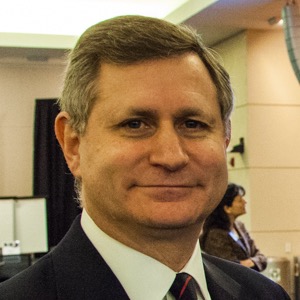At long last, the next Director of the U.S. Patent and Trademark Office (USPTO) has been revealed. My congratulations to Andrei Iancu of Irell & Manella on his nomination to lead the USPTO. I recently wrote about the direction the next leader of the USPTO will need to provide[1] and the U.S. patent system remains at an important crossroads. Assuming Director-designee Iancu’s nomination is eventually confirmed, he will have the opportunity, through a variety of channels, to meaningfully influence the path of the U.S. patent system going forward.
In the 2017 U.S. Chamber report on Global IP[2] the U.S. patent system fell from the best in the world to tenth, equal with the patent system in Hungary. The Chamber report explains that the post-patent grant challenge proceedings created under the America Invents Act adds substantial costs and uncertainty, and the Court’s narrow interpretation of patentability of biotech and computer-related inventions puts the U.S. in a disadvantageous position as compared to international standards. Clearly there is work to be done to restore the competitiveness of the U.S. patent system. Unfortunately, there is currently a lack of consensus in the U.S. on how to proceed. Patent subject matter eligibility is prime among the substantive issues for which legislation has been proposed, but to date no legislation has been formally introduced. Many of the major IP associations have published resolutions urging legislation to amend 35 U.S.C. 101, but work to build consensus continues .[3]
Building that consensus is an opportunity for the new USPTO Director to show leadership as he assumes his new role. The leader of the USPTO serves as the senior advisor within the federal government on all intellectual property matters. In that role, the USPTO Director has the ability to signal to Congress that its help is needed in this area and when patent subject matter eligibility finally gets the attention it deserves from Congress, there is no doubt Congress will look to the USPTO Director for advice. There is little hope that the Federal Circuit will lead the way. In fact, rather than add clarity to subject matter eligibility law, the Federal Circuit has made a practice of rendering a significant number of decisions without written opinion, in effect abdicating its responsibility to clarify the law. This vacancy allows Director-designee Iancu and the USPTO room to set the tone and drive policy reform on patent subject matter eligibility.
Director-designee Iancu will have more direct influence on the post-patent grant challenge proceedings created under the America Invents Act. As the challenge proceedings and the Patent Trial and Appeal Board mark their fifth anniversary, we should reflect on whether they have achieved their intended purpose. About a year ago I explained how inter partes review proceedings are no more a true alternative for litigation than the inter partes reexamination proceeding which they replaced and supposedly improved upon – nothing has happened since to change that view.[4] Furthermore, a buffet of other meaty issues remains with respect to the post-grant challenge proceedings. These issues include high rates of institution, the proper standard for claim construction, the infrequency of permissible claim amendments, the lack of a presumption of validity, high rates of invalidity, whether final written decisions must be issued for every challenged claim, serial challenges, inconsistency of outcomes, inconsistency with the courts, and the constitutionality of the challenge proceedings altogether. These are just the issues that came to me quickly – I am sure I am just scratching the surface. And do not forget the latest eye opener: expanded rehearing panels stacked in favor of a desired outcome.[5] That the challenge proceedings have problems is not surprising given their complexity, but the volume of issues indicates there is plenty of room for improvement. I continue to support the original goals of the challenge proceedings and while changes in some areas are required, a wholesale restructuring of the procedures is not necessarily required. But I do look forward to changes that improve the balance between patentees and challengers. Many of these issues are within the control of the USPTO, so Director-designee Iancu should be able to jump in and have immediate impact by making improvements.
Now that new, permanent leadership is on its way, I would like to see the USPTO assert itself more strongly. As Director-designee Iancu comes on board he should give priority to eliminating the uncertainties resulting from recent Supreme Court case law on patent subject matter eligibility and ensuring the next five years of post-patent grant challenge proceedings are significantly better than the first five years.
_______________
[1] What Direction Will the Incoming Director of the U.S. Patent and Trademark Office Need to Provide? IP Watchdog, June 27, 2017.
[2] The report can be found at http://www.theglobalipcenter.com/ipindex2017/#.
[3] See, for example, Dennis Crouch, AIPLA On Board with Statutory Reform of 101, Patently-O, May 16, 2017.
[4] Have We Met the Challenge of Creating Effective Post Grant Challenge Proceedings? IP Watchdog, September 7, 2017.
[5] Gene Quinn, USPTO admits to stacking PTAB panels to achieve desired outcomes, IP Watchdog, August 23, 2017.

![[IPWatchdog Logo]](https://ipwatchdog.com/wp-content/themes/IPWatchdog%20-%202023/assets/images/temp/logo-small@2x.png)


![[Advertisement]](https://ipwatchdog.com/wp-content/uploads/2024/04/UnitedLex-May-2-2024-sidebar-700x500-1.jpg)
![[Advertisement]](https://ipwatchdog.com/wp-content/uploads/2024/04/Artificial-Intelligence-2024-REPLAY-sidebar-700x500-corrected.jpg)
![[Advertisement]](https://ipwatchdog.com/wp-content/uploads/2024/04/Patent-Litigation-Masters-2024-sidebar-700x500-1.jpg)

![[Advertisement]](https://ipwatchdog.com/wp-content/uploads/2021/12/WEBINAR-336-x-280-px.png)
![[Advertisement]](https://ipwatchdog.com/wp-content/uploads/2021/12/2021-Patent-Practice-on-Demand-recorded-Feb-2021-336-x-280.jpg)
![[Advertisement]](https://ipwatchdog.com/wp-content/uploads/2021/12/Ad-4-The-Invent-Patent-System™.png)






Join the Discussion
4 comments so far.
Larry Glaser
November 3, 2017 03:16 amWould you want Hillary Clinton, James Comey, Loretta Lynch and Obama (with Google in his oval office 457 times during his presidency) running your Patent Office? My ideas, my inventions are not at all, some other person’s individual’s franchise to pollute and chrony-up. It should be based on a fair set of laws, or, we go into the dark ages and find we are no longer a power, as a Nation. Inventors simply do not share their ideas any longer. We become fallen chumps, Globalist-defeated and from within, no less….the Nation of W.C. Field’s worst nightmare…eternal suckers
Anon
September 16, 2017 02:37 pmMr. Heller,
Your answer is not an answer. It amounts to returning the case BACK TO an Article III court and ALL that which came with being in an Article III court.
In case you have not yet figured it out, the Efficient Infringer lobby did not want an Article III answer.
Edward Heller
September 15, 2017 07:01 pmMr. Schecter, regardless of the outcome of Oil States, wouldn’t it be better for the patent system that IPRs (CBMs) be tried to a completely independent legislative court staffed by ALJs, and funded by Congress and not by user fees? (User fee funding gives an incentive to grant petitions.) Further, require standing and skip any requirement for an initial determination to institute. Let the patent owner raise estoppel issues and challenge the petition for sufficiency.
If Oil States requires an Article III court, bump the ALJs up to Article III judges.
Paul F. Morgan
September 14, 2017 09:07 amYes, the new Director could helpfully expedite rule changes to clarify IPR claim amendment and joinder practice, as long as they are consistent with the statute and with the Trump administration edict precluding any new regulation unless two others are eliminated. But interpreting Sup. Ct. Sup. Ct. decisions much more narrowly than Fed. Cir. decisions is not likely to be sustained. And some of the suggestions here simply cannot be done without Congressional legislative changes, as Cuozzo demonstrated.